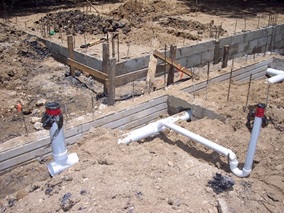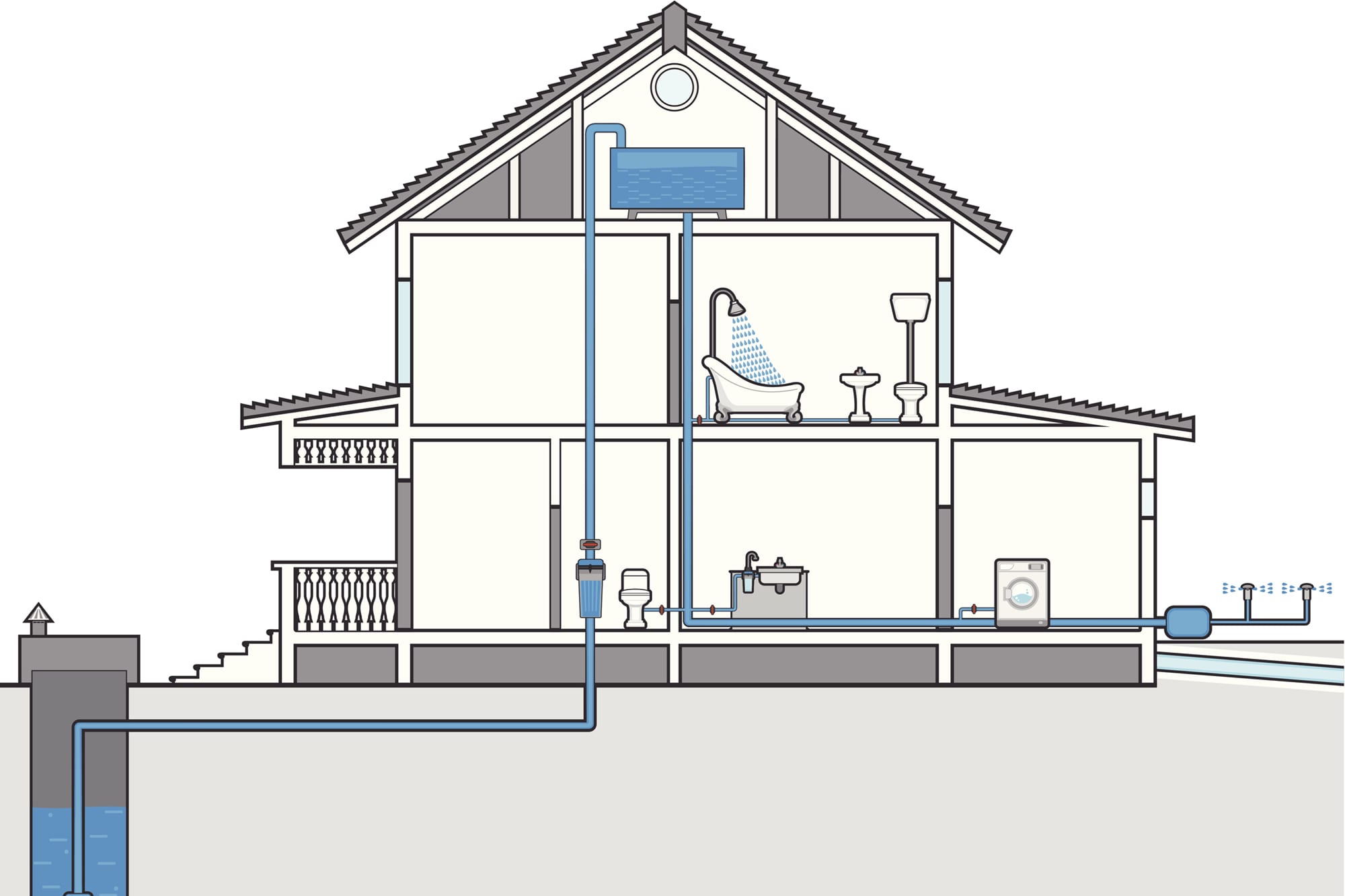Exploring Your Home's Plumbing System Anatomy
Exploring Your Home's Plumbing System Anatomy
Blog Article
This post down the page on the subject of Exploring Your Homes Plumbing Anatomy is indeed compelling. Don't miss it.

Recognizing exactly how your home's plumbing system functions is essential for every property owner. From delivering tidy water for alcohol consumption, food preparation, and showering to securely getting rid of wastewater, a properly maintained pipes system is critical for your household's health and wellness and comfort. In this comprehensive overview, we'll explore the intricate network that makes up your home's pipes and deal pointers on upkeep, upgrades, and managing typical problems.
Introduction
Your home's plumbing system is greater than simply a network of pipes; it's a complex system that guarantees you have access to clean water and effective wastewater elimination. Knowing its parts and exactly how they work together can help you prevent expensive repair work and ensure every little thing runs efficiently.
Basic Parts of a Plumbing System
Pipes and Tubes
At the heart of your pipes system are the pipes and tubes that carry water throughout your home. These can be constructed from numerous materials such as copper, PVC, or PEX, each with its benefits in regards to longevity and cost-effectiveness.
Components: Sinks, Toilets, Showers, etc.
Components like sinks, toilets, showers, and bathtubs are where water is used in your house. Understanding just how these fixtures attach to the pipes system assists in identifying troubles and planning upgrades.
Shutoffs and Shut-off Points
Valves manage the circulation of water in your plumbing system. Shut-off valves are vital throughout emergencies or when you need to make fixings, allowing you to separate parts of the system without disrupting water flow to the entire home.
Water Supply System
Main Water Line
The primary water line attaches your home to the municipal water system or a personal well. It's where water enters your home and is distributed to different components.
Water Meter and Stress Regulatory Authority
The water meter actions your water use, while a pressure regulator makes certain that water moves at a safe pressure throughout your home's plumbing system, stopping damage to pipes and fixtures.
Cold Water vs. Hot Water Lines
Comprehending the distinction between cold water lines, which supply water directly from the primary, and warm water lines, which lug heated water from the water heater, assists in repairing and planning for upgrades.
Drain System
Drain Pipes Piping and Traps
Drain pipelines carry wastewater far from sinks, showers, and bathrooms to the drain or septic system. Traps avoid drain gases from entering your home and likewise trap particles that might create obstructions.
Air flow Pipelines
Air flow pipelines permit air right into the drainage system, stopping suction that can reduce water drainage and trigger catches to vacant. Appropriate air flow is crucial for keeping the honesty of your pipes system.
Relevance of Correct Water Drainage
Making certain appropriate drain prevents back-ups and water damages. Consistently cleaning drains pipes and keeping catches can protect against expensive repairs and extend the life of your plumbing system.
Water Heating Unit
Types of Hot Water Heater
Water heaters can be tankless or typical tank-style. Tankless heating units heat water as needed, while containers store heated water for immediate usage.
Updating Your Pipes System
Reasons for Updating
Updating to water-efficient components or replacing old pipes can improve water quality, lower water costs, and boost the value of your home.
Modern Plumbing Technologies and Their Advantages
Discover innovations like smart leak detectors, water-saving commodes, and energy-efficient hot water heater that can save money and reduce ecological effect.
Cost Considerations and ROI
Calculate the ahead of time prices versus lasting financial savings when taking into consideration pipes upgrades. Numerous upgrades spend for themselves with reduced energy expenses and fewer repair services.
How Water Heaters Attach to the Plumbing System
Recognizing just how hot water heater connect to both the cold water supply and warm water circulation lines aids in diagnosing problems like inadequate warm water or leakages.
Upkeep Tips for Water Heaters
Frequently flushing your hot water heater to get rid of sediment, checking the temperature settings, and examining for leakages can extend its lifespan and improve energy effectiveness.
Typical Pipes Concerns
Leakages and Their Causes
Leaks can occur because of aging pipelines, loosened installations, or high water stress. Attending to leaks quickly avoids water damage and mold development.
Obstructions and Blockages
Blockages in drains pipes and commodes are often caused by flushing non-flushable things or a build-up of grease and hair. Utilizing drainpipe screens and bearing in mind what goes down your drains can stop obstructions.
Indicators of Plumbing Problems to Look For
Low tide stress, slow-moving drains pipes, foul odors, or abnormally high water costs are indicators of potential plumbing problems that need to be attended to immediately.
Plumbing Maintenance Tips
Routine Assessments and Checks
Schedule annual pipes examinations to catch problems early. Try to find indicators of leaks, rust, or mineral accumulation in taps and showerheads.
Do It Yourself Upkeep Tasks
Simple tasks like cleaning tap aerators, looking for toilet leaks utilizing color tablet computers, or insulating revealed pipes in cold climates can stop significant pipes issues.
When to Call a Professional Plumbing Technician
Know when a plumbing problem calls for specialist expertise. Trying intricate repairs without proper knowledge can result in even more damages and greater repair service prices.
Tips for Lowering Water Use
Straightforward behaviors like dealing with leakages quickly, taking much shorter showers, and running complete lots of laundry and meals can save water and reduced your energy bills.
Eco-Friendly Pipes Options
Consider lasting plumbing materials like bamboo for floor covering, which is durable and environmentally friendly, or recycled glass for kitchen counters.
Emergency Readiness
Actions to Take During a Pipes Emergency situation
Know where your shut-off valves are located and exactly how to switch off the water supply in case of a ruptured pipe or significant leak.
Importance of Having Emergency Situation Contacts Useful
Maintain get in touch with details for local plumbings or emergency solutions conveniently available for quick action throughout a pipes situation.
Ecological Impact and Conservation
Water-Saving Components and Appliances
Setting up low-flow taps, showerheads, and toilets can substantially lower water use without sacrificing performance.
Do It Yourself Emergency Situation Fixes (When Relevant).
Short-lived solutions like using duct tape to patch a leaking pipe or putting a container under a leaking tap can decrease damages until a professional plumbing shows up.
Final thought.
Comprehending the makeup of your home's pipes system encourages you to keep it properly, conserving time and money on repair work. By following regular maintenance routines and staying informed about modern pipes modern technologies, you can guarantee your pipes system runs successfully for several years to come.
HOW YOUR PLUMBING SYSTEM WORKS
Which Pipes Do What?
Blue lines = fresh water supply entering the building Red lines = hot water supply entering the building Grey lines = pipes carrying waste away from the building and venting pipes carrying gases away from the building (through the roof) YOUR MAIN PLUMBING SYSTEMS
There are two main plumbing systems that support your home s basic plumbing needs one that brings clean water into your home, and one that sends dirty water away from your home. Connected to the toilet, bath, shower, and other faucets in your home, these two systems keep your water flowing in the right directions.
ACCESSING FRESH WATER
Fresh and clean water is brought into your home through the main water supply line . Filtered through one pipe, this water is pressured to flow into the various fixtures in your home at any given time.
This water can be sourced from a well located on your property, a pond or river (mostly cottages), or, as in most cases, from the city s municipal water treatment centre. However, it is important to note that water that is untreated, such as the water siphoned from ponds or rivers, may not be safe to drink. Personal water supplies always need to be treated for hardness and contaminants before consumed.
MUNICIPAL WATER SUPPLIES
Improve taste and odour Remove sediment Eliminate hardness Reduce chlorine COLD WATER SUPPLY VS. HOT WATER SUPPLY
Cold water flows into your home or building through the service line, which then distributes hot or cold water to your fixtures. This line is most commonly run through a central column that runs floor to floor. Hot water runs in short and straight pipes as the longer the pipeline, the more heat that will be lost in the transfer. Having shorter pipes also allows residents to access hot water more quickly.
WASTE WATER SYSTEM
Your wastewater system is divided into two parts pipes that send wastewater away from your home and venting pipes that send sewer gas away from your home. Sewage water travels through pipes that flush the water and waste towards local sewers that are operated and managed by your city or town. Most sewer systems rely on gravity to move the wastewater to where it needs to go.
The further away from your toilet or sink, the larger wastewater pipes become. This allows for waste to be disposed of from various parts of your home or business at once without pipe blockages. The angle and flow of these pipes are also essential for keeping your waste pipes clear of build up.
https://harrisplumbing.ca/how-your-home-plumbing-system-works/

As a fervent person who reads on Anatomy of a House: Understanding the Components, I was thinking sharing that information was valuable. Enjoyed our blog? Please quickly share it. Let another person check it out. Thank you for your time. Please pay a visit to our site back soon.
Call Today Report this page